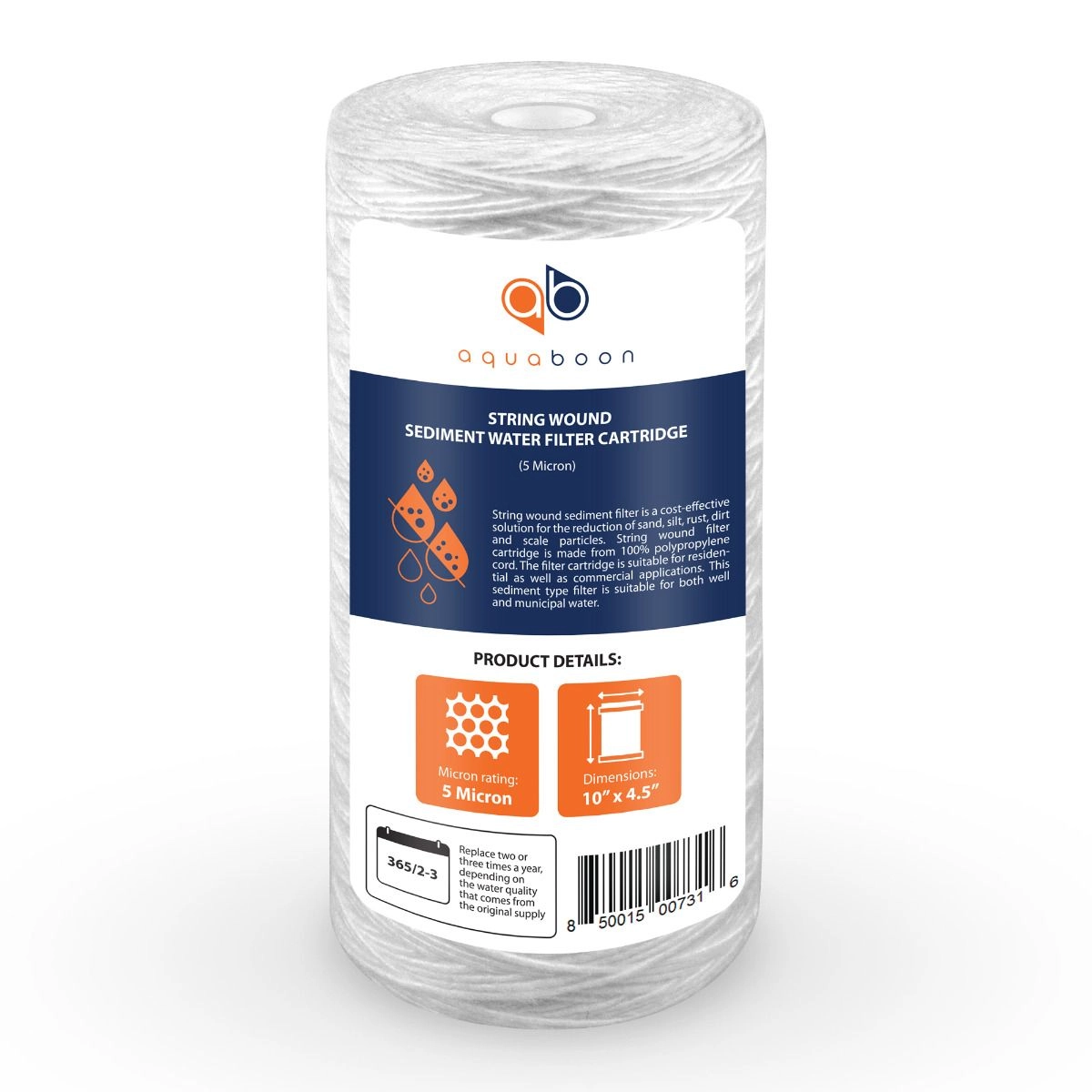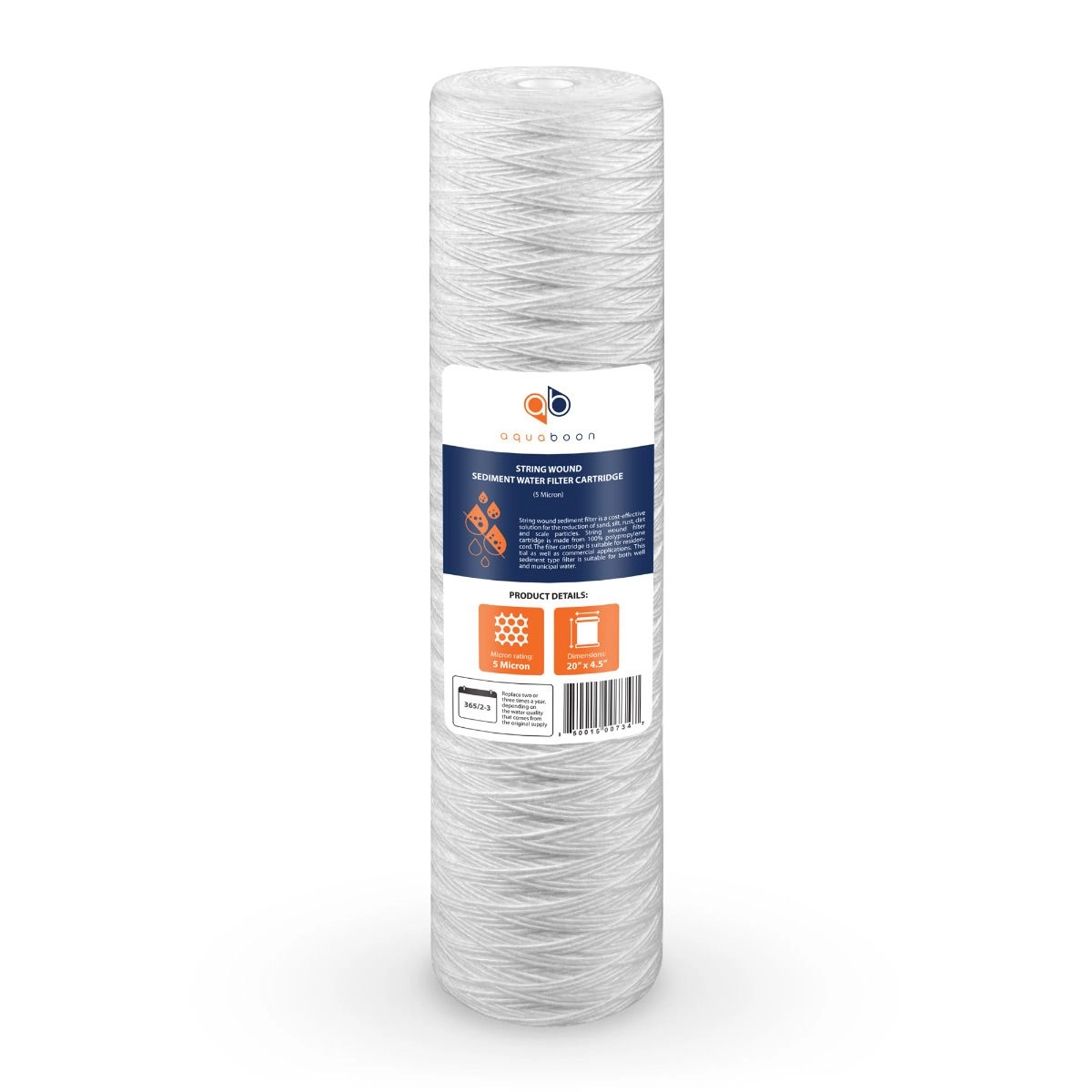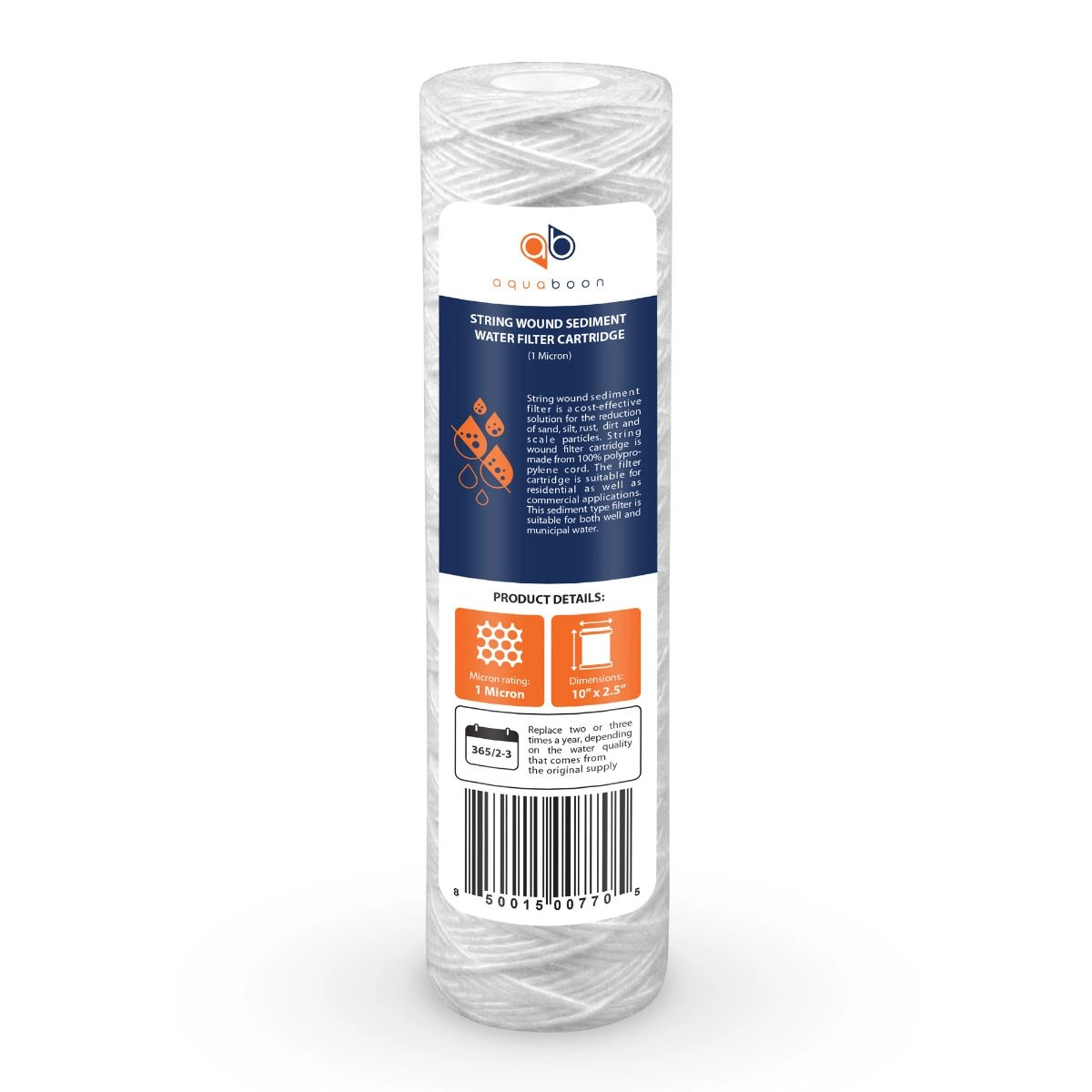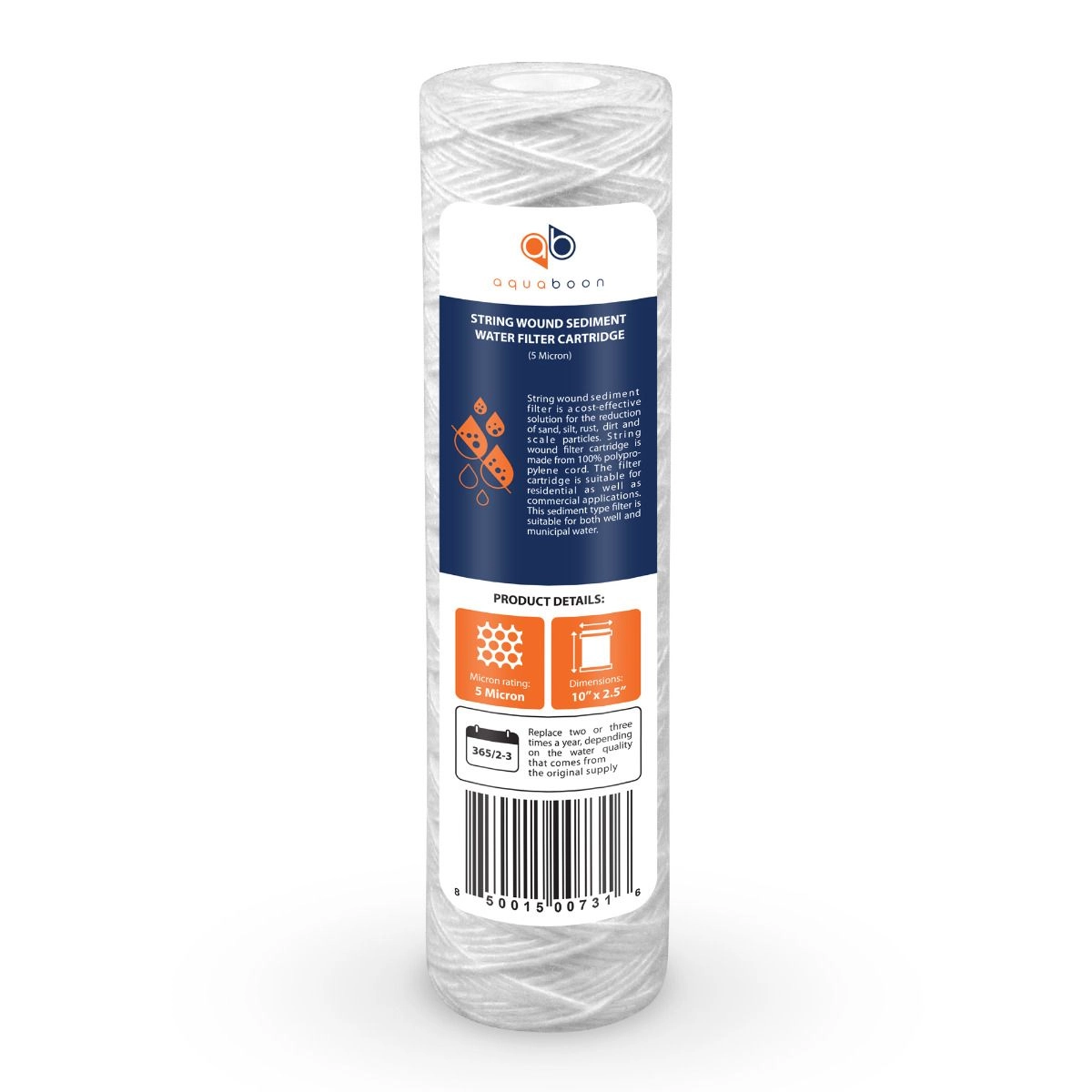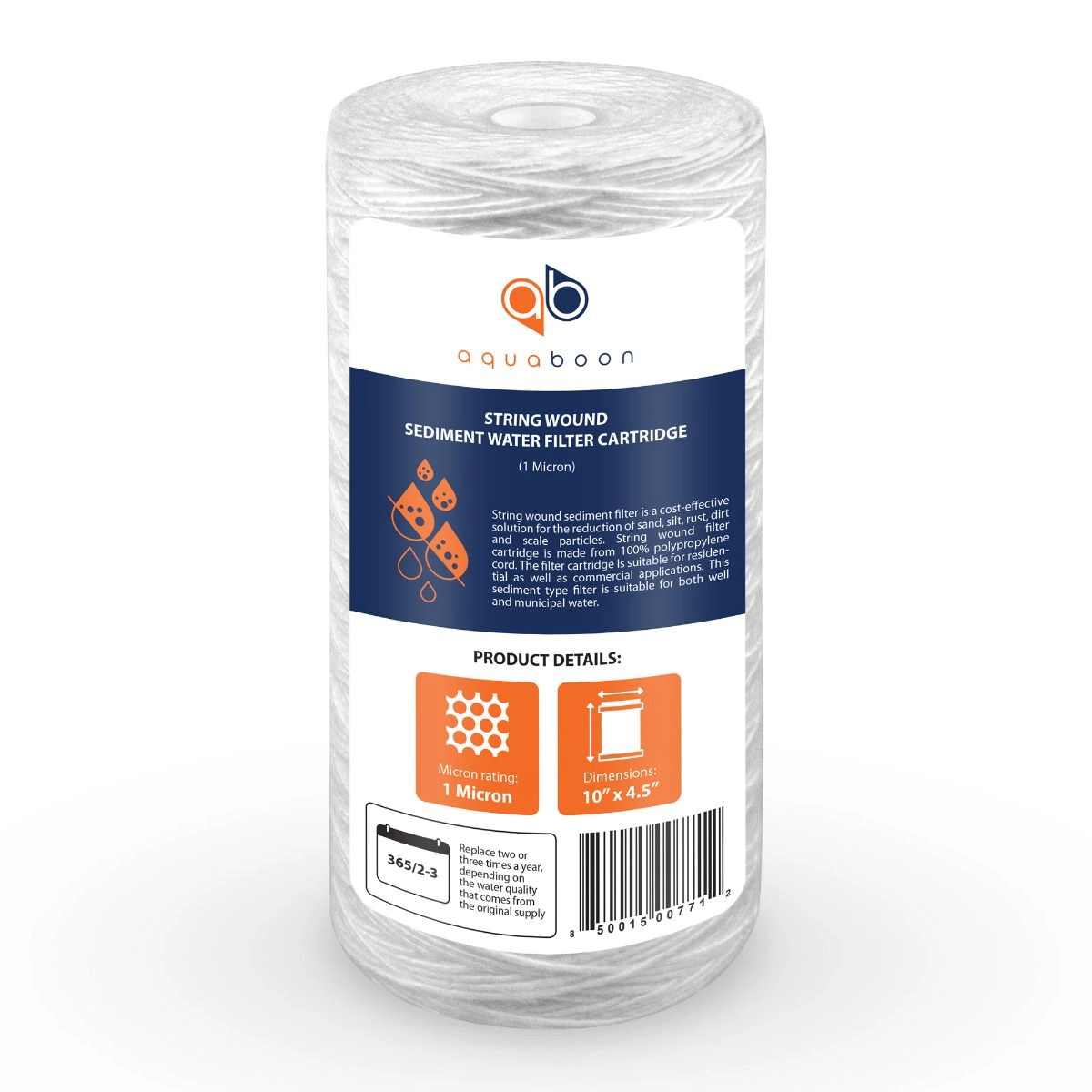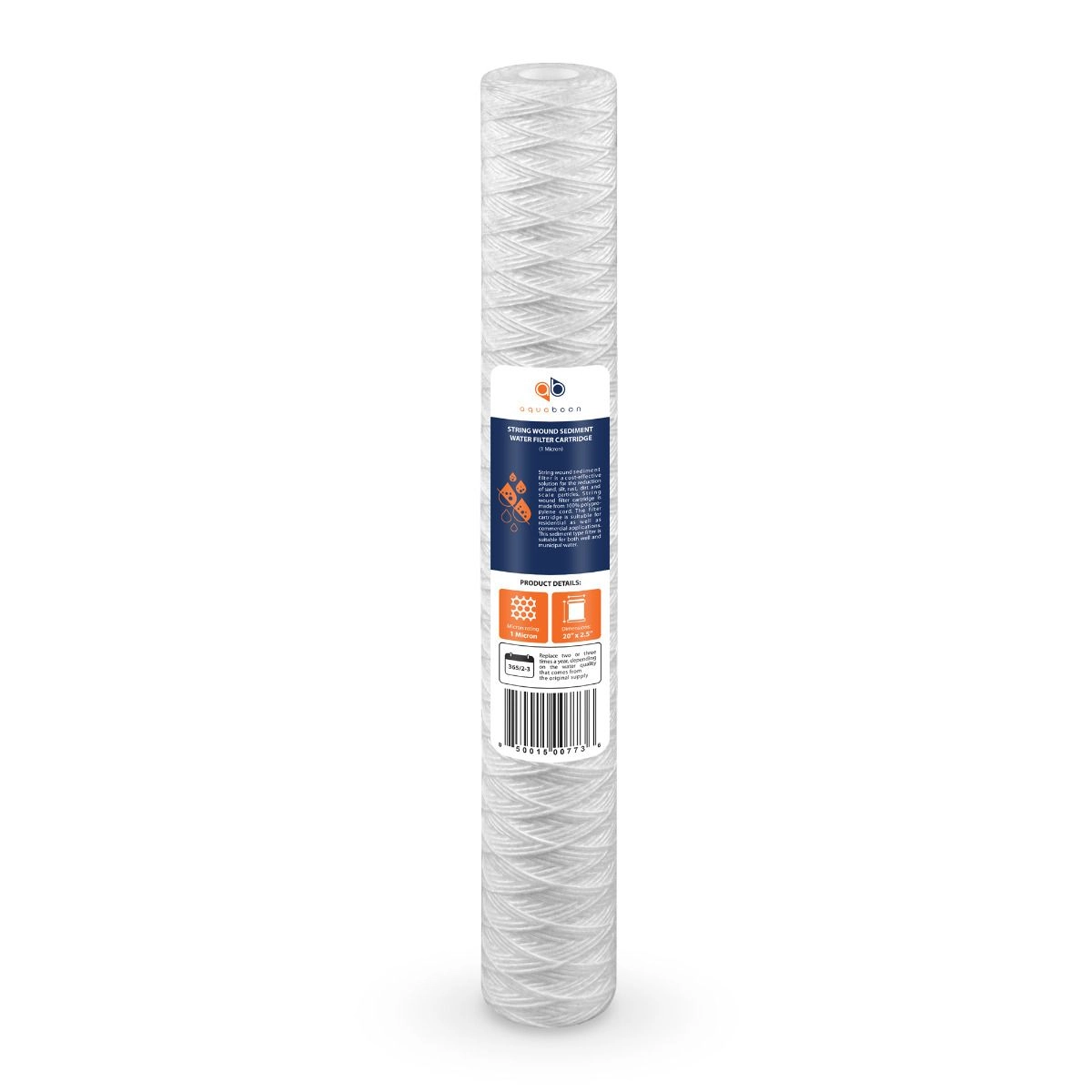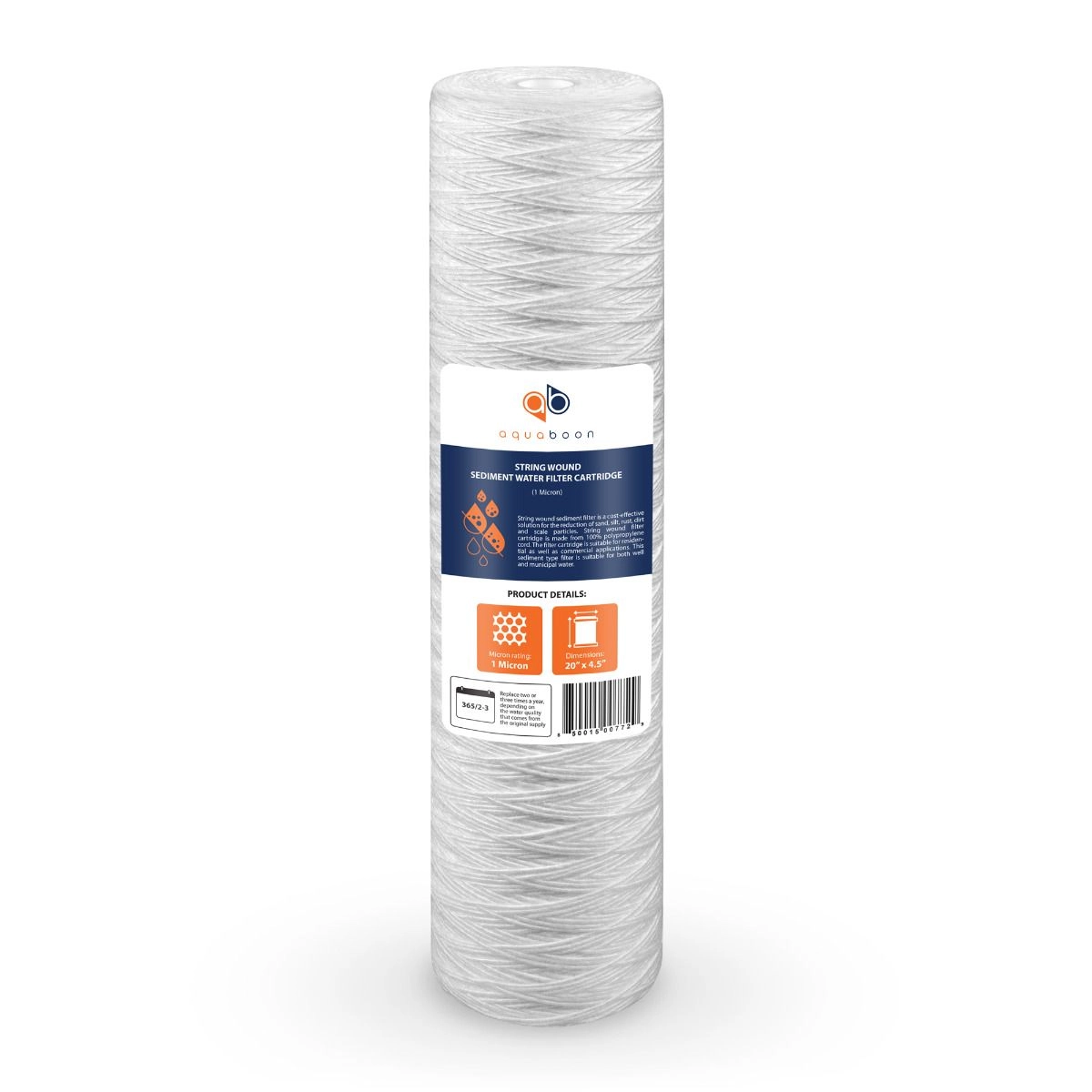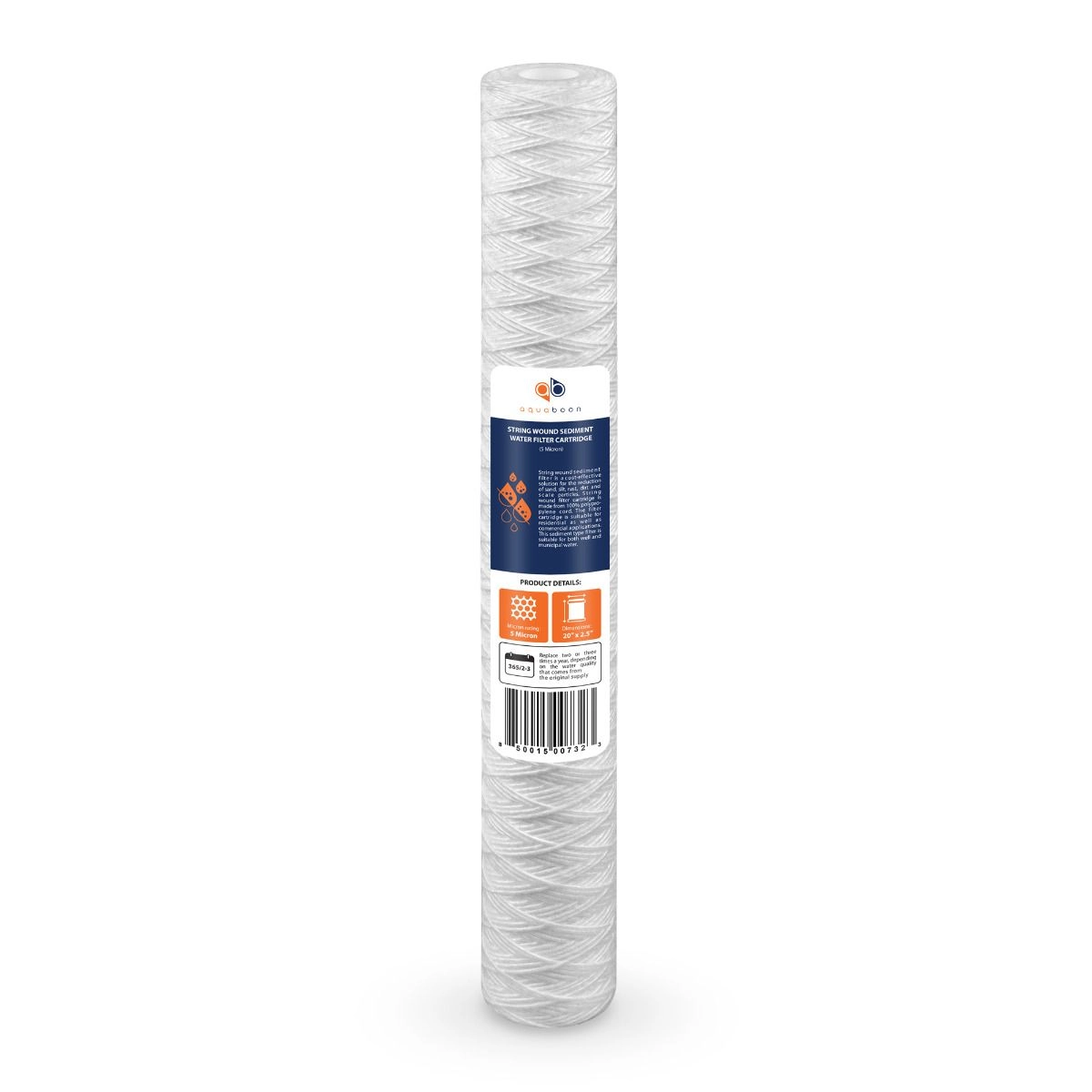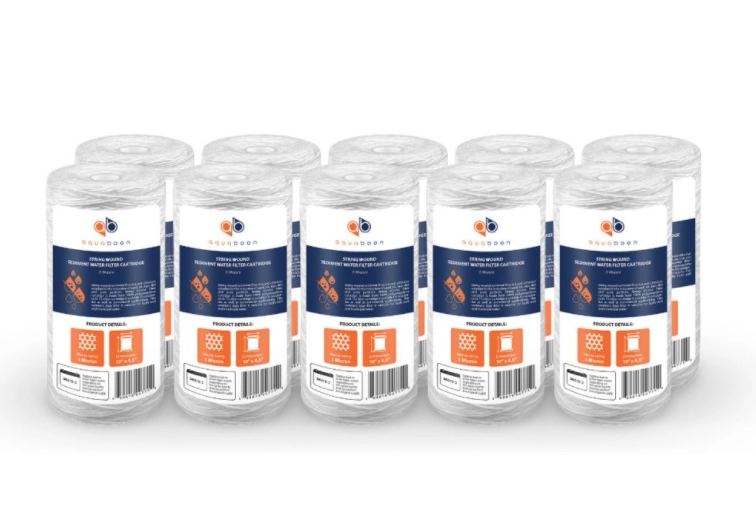String Wound Sediment Filters

Treatment plants leverage safe disinfectants such as chlorine to present households with clean water. However, as the water runs through the piping systems, it might come into contact with rust, sand, wood and metal shavings, as well as other particles that might be detrimental to you if consumed.
String wound filters provide a surefire way to eliminate potentially harmful debris from your water. They are basically cartridges whose filtration medium is strings tied together on a core.
The string and the core are mostly manufactured from polypropylene, a highly durable material that holds up well against harsh chemicals present in water.
Before settling on these cartridges as your go-to decontamination media, understand that string water filters are only designed to sieve particles and debris. They cannot neutralize chemicals, gases, or heavy metals.
Additionally, they do not improve taste or eliminate repulsive odours from your water. For these reasons, they are used alongside granular activated carbon filters, among other decontamination systems.
Features of this type of filter cartridges
Notable features of wound filter cartridges include:
- Deep filtration: Since the layers grow thinner towards the corer, these purifiers sieve dirt commencing from the surface to the core, improving efficiency.
- Accelerated flow rates: They are made from yarn, which allows water to flow through them easily.
- Low pressure drop: As the cartridge holds on to dirt, water will have difficulties flowing through, causing a pressure drop. This feature lets you identify when there is a dirt build-up, signalling that the cartridges need to be switched out with newer ones.
- Varying micron ratings: these cartridges come in a host of micron ratings, indicating the particle size they can strain.
- Varying lengths: string water filter cartridges are of different sizes, making them ideal for numerous applications
String wound water filter sizes
A string wound sediment filter cartridge may be one of the following standard sizes:
- 10 x 2.5 Inch
- 10 x 4.5 Inch
- 20 x 2.5 Inch
- 20 x 4.5 Inch
These digits refer to the length and width of the cartridges, respectively. The one to pick depends on the water purification system you are using. However, the larger the cartridge, the higher its sediment holding capability.
Similar to melt blown filter cartridges, these types of cartridges are replaceable. As your appliance continually sieves out dirt, waste materials will build up on the cartridge. After some time, you will be required to exchange it for a newer one. Otherwise, you risk drinking not-so-clean water that contains harmful particles.
If you are looking to purchase an array of filters, Filterway is your one-stop website. We have various types of durable and efficient cartridges that guarantee safer hydration.
Contact us today for more information.
FAQ


